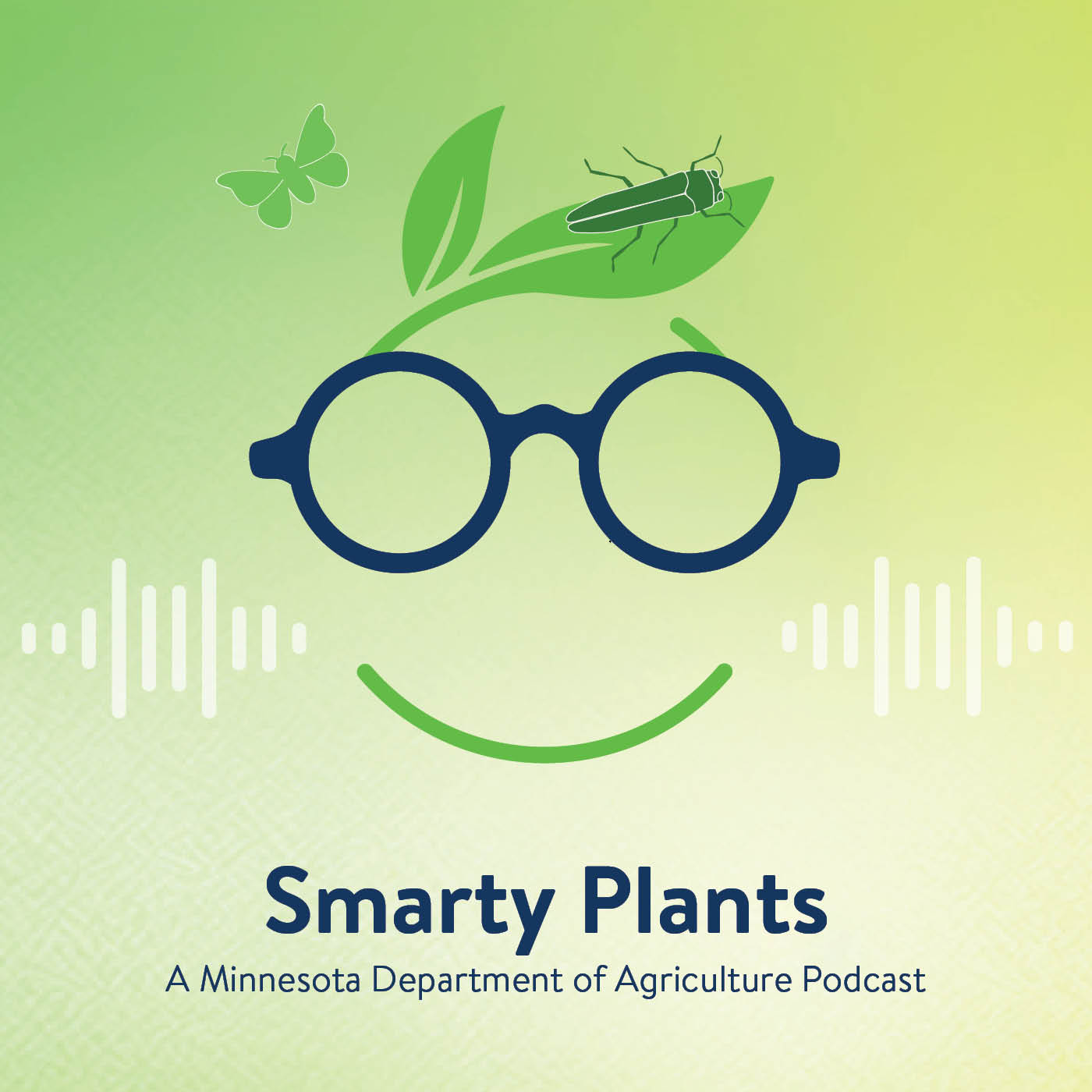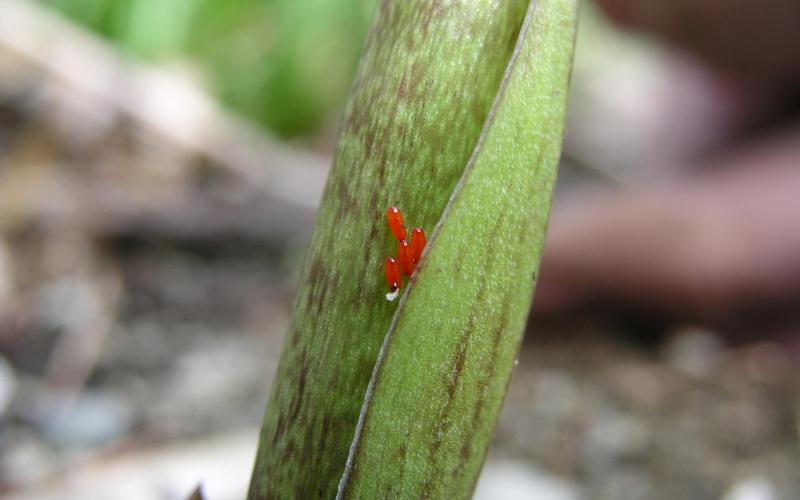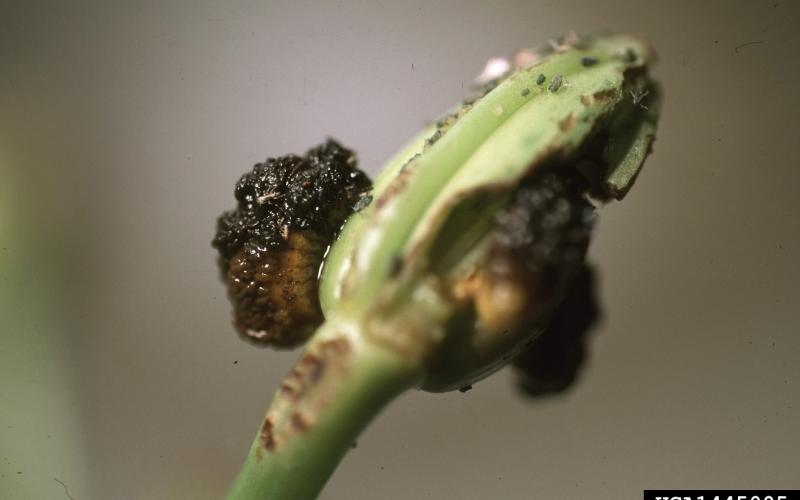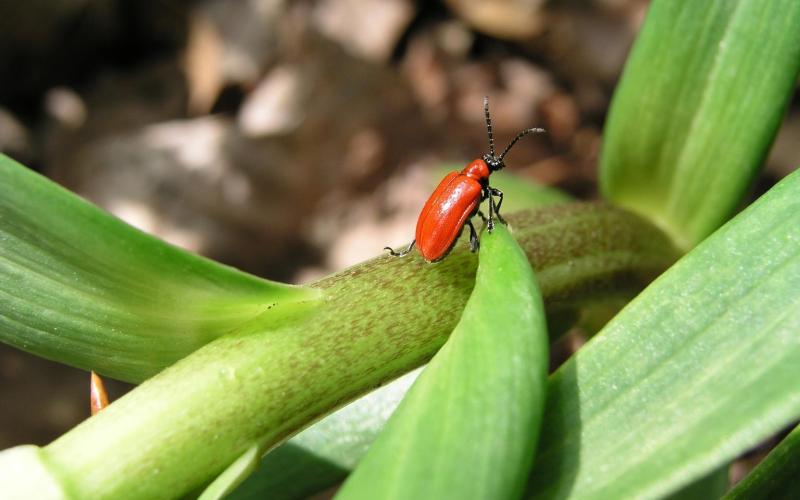Scientific name: Lilioceris lilii Scopoli
Native range: Europe and Eurasia
At Risk
Lilium spp. and Fritillaria spp. are the primary hosts for lily leaf beetle; larvae only consume plants in these genera. Adults are reported to occasionally feed on other plants including hostas, hollyhock, potato, bittersweet, Solomon’s seal and lilly of the valley. Larvae cause most of the damage to plants and can completely defoliate host plants.
Distribution
The lily leaf beetle was first found in North America in the 1940s (Montreal). It can now be found in most Canadian provinces, in the northeastern U.S., Wisconsin, Iowa, and Washington State. Lily leaf beetle was first reported in Minnesota in July of 2020 and has been confirmed in 4 counties (Anoka, Goodhue, Hennepin, and Ramsey).
Biology
Adults emerge from the soil in early spring. Eggs are laid on host plants, and larvae feed on the undersides of leaves before entering the soil to pupate into beetles. Beetles emerge and continue to feed until winter. Only one generation occurs per year.
Identification
Lily leaf beetles are distinctive-looking beetles that will be recognizable in multiple stages of development. Look for bright red beetles, reddish eggs laid in lines on the undersides of leaves, and bumpy, black larvae also on the undersides of leaves. The larvae cover themselves with their own excrement, likely to protect themselves from predators and parasitoids. Adults are a distinct scarlet red with black head, antennae and legs and measure about 1/2 inch long.
Regulatory Status: Non-Regulated
There are no federal, state or local regulations related to lily leaf beetle.
What Can I Do?
Contact the MDA via Report a Pest if you suspect an infestation of lily leaf beetle in Minnesota.
Smarty Plants Podcast

Discover Smarty Plants, the Minnesota Department of Agriculture's podcast that digs into the fascinating world of invasive species. Join expert guests as they share insights and solutions to protect our environment and agricultural resources. Visit Smarty Plants and start listening today.




